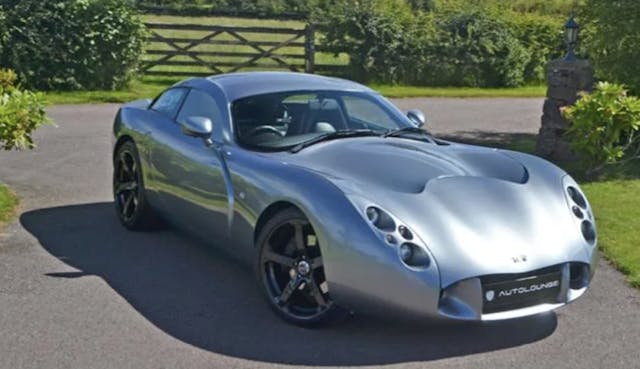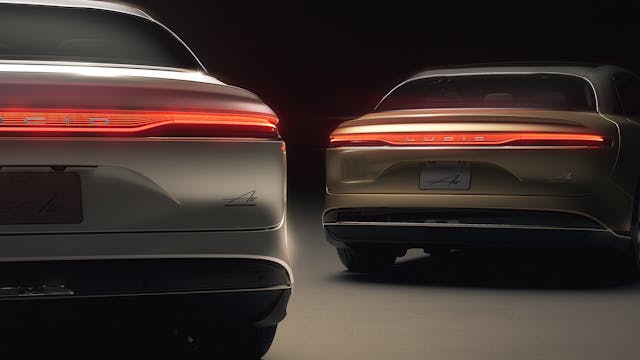Corolla hits 50 million made, Mazda honors 30 years of bumpin’ Bose, one-off TVR up for grabs
Toyota Corolla hits the 50 million mark

Intake: The 50 millionth Toyota Corolla has rolled off the production line, extending its record as the world’s most produced automobile. Launched in 1966, the Corolla has appeared as a sedan, hatchback, wagon and coupe. No less than 12 generations of Corolla have been produced over the last six decades at factories all over the world from Australia to Thailand and Brazil to the U.S., as well as at home in Japan. The Corolla made its name in motorsports on track in touring car racing and on the rally stage, taking the 1999 World Rally Championship for Manufacturers. Meanwhile, the AE86 model developed a cult following among fans of the art of drifting, yet its the mainstream cars’ appliance-like dependability rather than its character that has assured this sales record.
Exhaust: The Corolla’s numbers are not so surprising when you consider that it has been sold almost everywhere on the planet. The Ford F-Series, by contrast, has been America’s best-selling truck for 40 years in a row and currently stands around ten million units behind.
1 of 1 TVR up for grabs in Scotland

Intake: The only production TVR T440R is up for sale on Pistonheads with an asking price of £192,990 ($266,338). Originally to be called TuscanR, the production models were named T400R due to the power output of their magnificent Speed Six engine. Only a handful of T400Rs were produced, but just one T440R ever rolled off the TVR assembly line. TVR had planned to boost output with a supercharger but instead fitted the T440R with a larger, 4.2-liter version of its lovely inline-six engine. The sleek 2+2 coupe—there are two vestigial back seats—is built around a tubular steel and carbon-fiber chassis and represents the end of the Peter Wheeler era of TVR before the company was sold in 2004.
Exhaust: The T400R racers were successful in British GT racing but never saw the success at Le Mans Wheeler had hoped for. Nonetheless, this one-of-one sports car would make for a fine centerpiece to any Anglophile’s collection and is a fantastic representation of British craftsmanship. Few exotics in its price range would match the driving experience of this pinnacle of street-going TVRs.
Mazda celebrates 30 years of fidelity with Bose
Intake: Mazda and noted audio equipment manufacturer Bose are celebrating 30 years of partnership bliss, from the 1991 FD RX-7 up to the 2021 MX-30 electric crossover. Mazda suggests they are “defying conventions together,” which was true of FD RX-7’s “3.6-meter-long tube with a high-power woofer” that snaked around the FD’s cargo area and gobbled up an obscene amount of space. It was a grand gesture, and the start of something special.
Exhaust: How special? Consider how many automotive audio partnerships came and went for Bose (i.e., Nissan, Mercedes-Benz, VW, Audi, for starters.) and remember that the company’s first pair-up was with the brutishly handsome General Motors back in 1983. Perhaps (high) fidelity and loyalty aren’t mutually exclusive, but it’s always nice to see a manufacturer profess its love for a long-term, strategically important vendor—no matter how flingy other past lives may have been.
Sir Clive Sinclair: 1940–2021

Intake: British boffin Sir Clive Sinclair has passed away after a long illness. Sinclair was an unstoppable inventor and brought home computers to the U.K. public. His ZX 81 and Spectrum machines were hugely popular as educational tools, but also for gaming, and giants such as Activision and Codemasters were founded on the back of Sinclair’s technology. Having revolutionized home entertainment Sinclair set his sights on transportation, and there was a huge amount of expectation attached to the 1985 launch of his first electric vehicle. Hampered by the battery technology of the day as well as Sinclair’s desire to keep costs down, the Sinclair C5 was not the electric car everyone hoped to see. Instead it was a tiny plastic tricycle that only offered a small amount of pedal assistance to the rider. The recumbent riding position was efficient for pedaling but meant that the C5 was so low to the ground riders were right at tailpipe height and hard to see by car, truck, and bus drivers. Top speed was a paltry 15 mph which only made it more of a hazard, and the battery was good for 20 miles at best. Some 14,000 were built but the C5 will be forever be Sinclair’s very small white elephant.
Exhaust: Sir Clive Sinclair was a man with ideas ahead of his time. Sometimes, like the pocket calculator and the ZX home computers, they were a huge hit, but others like his pocket television and the C5 were let down by the technology of the time. Still, he never gave up and will be fondly remembered as one of Britain’s best-loved inventors.
Lucid’s EPA-verified 520 miles of range makes for a rarified Air

Intake: Perhaps you sometimes do get what you pay for. That is, if you fork over $169,000 for a Lucid Air “dream edition range” with the standard 19-inch wheels and 933 horsepower, at your disposal will be an all-electric range 520 miles per charge. That’s according to the EPA, which rated the nearest competitor (Tesla’s $89,990 Model S Long Range) at 405 miles, which subsequently gives the soon-to-be released Lucid another feather in its cap. Reservations open up this Saturday, September 18, at 4:00 p.m. ET.
Exhaust: Its often hard to see through the hype of electric startups these days, but the Lucid Air seems to combine Tesla’s market-disruptive, electrified performance with the proper attention to detail essential for successful luxury vehicle brands. It could be the best of both worlds, and Lucid CEO Peter Rawlinson could be the Henry M. Leland to Elon Musk’s Henry Ford. If they ever make it to market, Fisker and Faraday Future will have stiff competition from Lucid.

